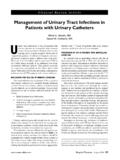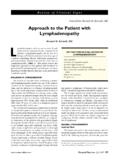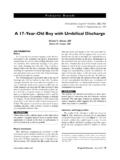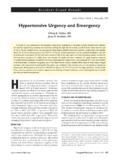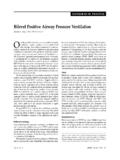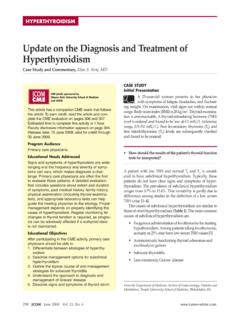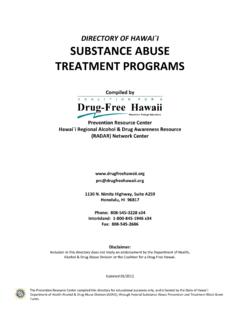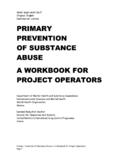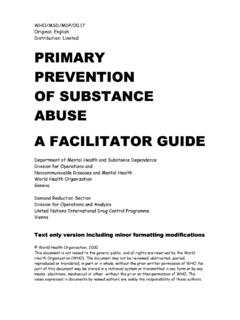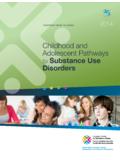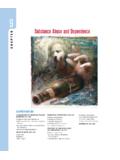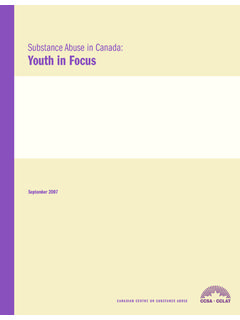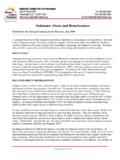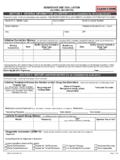Transcription of Substance Abuse Among Physicians: What You Need to Know
1 Career Pulse Substance Abuse Among Physicians: What You Need to Know Roger S. Cicala, MD. ost physicians are not surprised when told abusing physician will often leave a job (or several jobs). M that more than 10% of Americans have a Substance Abuse problem at some time dur- ing their Anyone who has rotated through an emergency department is aware of the magnitude of the problem. However, many are un- rather than risk being identified as impaired. The inability or unwillingness of physicians to recog- nize the signs and symptoms of Substance Abuse in their colleagues also contributes to the delay in identi- fying the physician with a Substance Abuse problem. aware that physicians themselves develop Substance Almost every physician is familiar with the patients with Abuse problems at least as frequently, and perhaps end-stage alcoholism or drug Abuse who haunt emer- more frequently, than the population in ,3 gency departments.
2 However, far fewer physicians con- Although the exact rate of Substance Abuse Among sider Substance Abuse as a possible diagnosis before physicians is uncertain, even the most conservative esti- that end stage is reached. Fewer than 40% of primary mates are that 8% to 12% of physicians will develop a care physicians routinely question patients regarding Substance Abuse problem at some point during their alcohol Abuse , and fewer than 20% screen for potential ,5 At any given time, as many as 7% of practicing drug Only a small minority of physicians feel physicians roughly 1 out of every 14 are active sub- they have a basic knowledge concerning the diagnosis stance ,5 No group of physicians are immune.
3 And treatment of Substance The numbers are similar for every specialty, every Diagnosing Substance Abuse in a physician is even region of the country, every age range, in urban or more difficult than diagnosing the problem in the gener- rural areas, and in academic medicine versus private al population. Most physician Substance abusers continue practice. to function quite well until the problem is far advanced. The impact of the problem is severe. Chemical im- Because their work provides either the income for drugs pairment has been shown to be a major risk factor for or access to drugs, physicians are very likely to protect medical malpractice and negligence lawsuits,6 the their performance at work until the disease has neared development of physical and psychological illness,7 and end stage.
4 The duration of this period varies largely adverse effects on the Substance abuser's Left according to the Substance (s) involved. Alcoholics can untreated, the mortality rate of Substance Abuse Among often remain sober during working hours for many physicians has been reported as high as 17%.7 years, even though they drink large quantities at night Despite its high prevalence Among physicians, sub- and on weekends. Intravenous opiate or cocaine abusers, stance Abuse is rarely discussed at professional meet- on the other hand, may go from experimentation to col- ings (with the exception of anesthesiology organiza- lapse in a matter of weeks or tions) and receives limited coverage in medical school Nevertheless, signs of Substance Abuse are usually curricula.
5 In the majority of cases, physicians with sub- present to the objective evaluator, and certain risk fac- stance Abuse problems remain undetected by their col- tors for the problem are well recognized. Given that as leagues for several years before any intervention is many as 10%3 to 15%1 of our colleagues develop a sub- ,8 stance Abuse problem during their careers, each of us How does such an endemic problem remain so should become aware of the signs and symptoms of the ignored? Largely because physicians who are abusing drugs or alcohol work hard to keep their problem invis- ible. The physician abuser often becomes a loner, avoid- ing colleagues and friends who might notice the effects Dr.
6 Cicala is an Associate Professor of Anesthesiology at the University of Tennessee College of Medicine and a staff physician at the Semmes- of Abuse . Any suggestion that the person's behavior or Murphey Neurologic and Spine Institute, Memphis, TN. He is also performance has changed is first met with explanations Assistant Medical Director for West Tennessee for the Tennessee Physi- and later with simply avoidance or outright anger. The cian's Health Network. Hospital physician July 2003 39. Cicala : Substance Abuse Among Physicians : pp. 39 46. problem, and know how to contact the appropriate when abusing substances known to cause withdrawal support groups to provide treatment and aftercare to symptoms, some abusers spend years in exhibiting a the physician when needed.
7 Binge pattern of Abuse and never experience classic with- drawal. Binge Abuse episodes of excessive drug or alco- CHARACTERISTICS OF Substance Abuse hol use followed by weeks or months of abstinence is Unfortunately, the public and far too many physi- common early in the course of Substance ,3 A. cians continue to think of Substance Abuse as a bad binge alcoholic, for example, may go weeks or months habit or a moral weakness rather than as a ,9 without a drink to prove that they do not have a prob- All modern medical authorities, however, consider sub- lem. When they do drink, however, they often drink far stance Abuse to be a neurologic or psychiatric illness more than they had planned and frequently have ad- that is contributed to by genetic, social, emotional, and verse consequences.
8 Psychological ,3,6,11,12 The individual with a As with most chronic diseases, the long-term course true Substance Abuse disorder is no more able to con- of Substance Abuse is one of deterioration over time. trol their disease without treatment than a person with During the early phases of the disease, however, many severe endogenous depression is able to stop feeling individuals have a waxing and waning course as their depressed through will power. efforts to control the problem have some short-term While the term drug addiction remains in wide- success. As the disease progresses, attempts at self con- spread use, it is generally avoided by Substance Abuse trol become shorter and less effective, and the effects professionals because of its emotional connotations.
9 On the individual, as well as on his or her family, be- The terms Substance Abuse or Substance depen- come ,10. dence are preferred for clinical diagnosis. The Amer- The time course of deterioration varies according to ican Psychiatric Association's Diagnostic and Statistical the individual and the Substance of Abuse . Alcohol, Manual of Mental Disorders (DSM-IV) defines Substance benzodiazepine, and marijuana Abuse usually show a Abuse as a maladaptive pattern of use of a chemical slow, indolent course. It is often years or even decades Substance within a 12 month period that significantly before the problem becomes clearly evident; of course, interferes with the person's life as indicated by any 1 of some persons suffer significant effects in a much short- the following13: er time.
10 Conversely, intravenous opiate and cocaine Abuse (and smoking crack cocaine) usually has a very 1. Neglect of work, school, or home obligations rapid course; persons abusing these substances often 2. Recurrent use of the Substance in hazardous sit- suffer dramatic deterioration within months of their uations (eg, driving, operating machinery, or first ,10. in the case of a physician caring for patients). 3. Repeated Substance -related legal problems THE ETIOLOGIES OF Substance Abuse . While there is no single cause and effect factor for 4. Continued use of the Substance despite recur- developing Substance Abuse , several risk factors that pre- rent social or interpersonal problems associated with its use dispose individuals to developing the disease are known.


